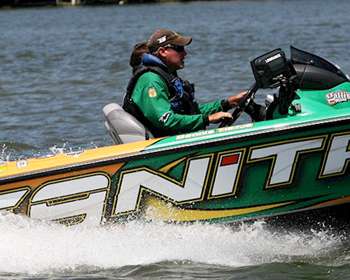
Regardless of whether you call them crawfish, crayfish, mudbugs or just craws, these crustaceans are important forage for bass from coast to coast. Relatively easy for a bass to track down, crawfish offer a compact and unique shape that lure manufacturers have been copying for decades.
2010 Elite Series rookie Dennis Tietje knows a thing or two about crawfish. Living in southern Louisiana, Tietje gave up his job as a crawfish farmer to test his skills on the Bassmaster Elite Series.
Throughout the years, he has come to realize that all crawfish are not created equal and there are certain situations when color is critical to success on the water. "I never really paid attention to the color of the crawfish that I was catching until I really started bass fishing," says Tietje. "Other anglers started calling me up wanting to know what colors were in the crawfish. That's when I really started paying more attention to it."
Tietje says there can be drastic color variations in the crawfish shells throughout the spring, when bass typically key on the abundant forage. Once the summer rolls around, most crawfish turn a dark brown or red color that is fairly consistent.
"The color of crawfish varies each year based on water temperature and the forage that the crawfish are feeding on. You have to understand both of these factors to know why they change colors," he says. He points to the color gold as a prime example of matching the crawfish.
During the spring, there is a three-week period where the gill plates on a crawfish will turn bright gold. Though he had been catching bass on a gold lipless crankbait for years, Tietje realized that the bait performed better during this period of time. "The gold in the bait matched the gill plates on the crawfish, so that's why they were eating the bait so much better during that time period," he says.
With the wide range of crawfish colors available on the market today, Tietje suggests anglers search their favorite tackle store for the best match. "It's important to try and find the closest available color on the market," he says. "If you want to fine-tune the color, use a permanent marker and alter the bait. It can really make a difference, but you have to have knowledge of what color you're going for."
With a little detective work sleuthing around the shallows or asking the right person, it's possible to put more bass in the boat with a simple color variation. "It's really complex, and there are lot of factors that make them change colors, but once you understand it, you can really put it to use and improve your fishing," concludes Tietje.
(Provided by Z3 Media)




